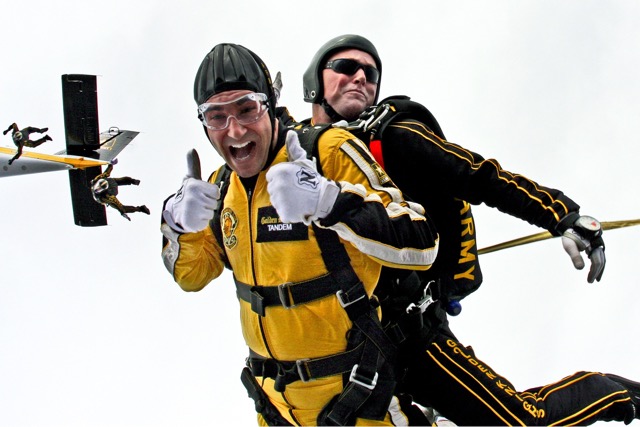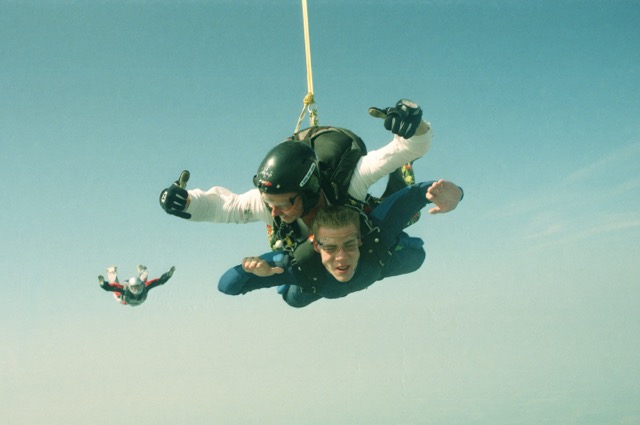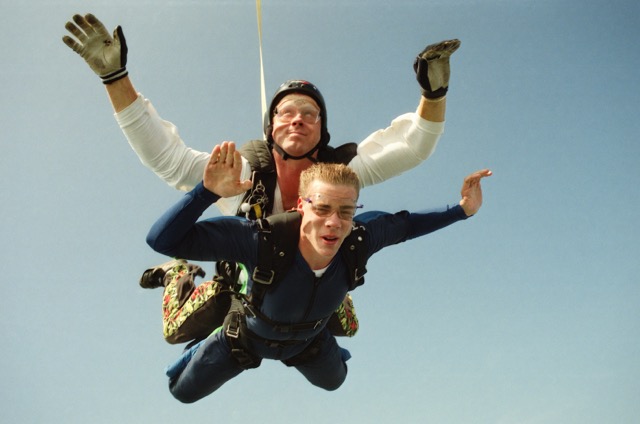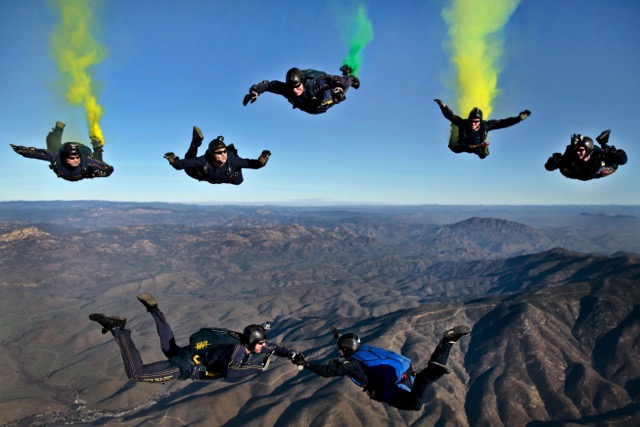Can You Skydive at Night? The answer is yes, you can! Skydiving during the day is an exhilarating experience on its own, but imagine the thrill of soaring through the night sky, seeing the world from a whole new perspective. Night jumps, as they are commonly known, offer a unique and awe-inspiring adrenaline rush that few other activities can match. However, night skydiving is not without its challenges and requires a specific set of skills and certifications. We will explore what night jumps are, what qualifies as a night skydive, the certifications needed to partake in this exhilarating adventure, and the equipment required to ensure a safe and unforgettable experience. So, if you’ve ever wondered what it’s like to skydive under the stars, read on to learn more about the exciting world of night jumps!
Introduction
Skydiving is an exhilarating activity that allows adrenaline junkies to experience the thrill of freefalling through the air. But have you ever wondered if skydiving is possible at night? The answer might surprise you.
Skydiving at night is indeed possible, but it is not as common as daytime jumps. Night jumps require additional training and equipment due to the challenges posed by the lack of natural light. You need to possess certain qualifications and certifications to ensure your safety during a night skydive.
One of the most important certifications you need for a night skydive is a night jump endorsement. This endorsement verifies that you have successfully completed training specifically designed for night jumps. It includes theoretical knowledge about night skydiving procedures, as well as practical training sessions to familiarize you with the unique aspects of jumping in low-light conditions.
What Are Night Jumps?
Night jumps are a thrilling and exhilarating experience for skydivers who want to take their adrenaline-fueled adventures to new heights. As the name suggests, night jumps involve skydiving during the nighttime hours, adding an extra element of challenge and excitement to the sport. While daytime skydiving offers its own unique perspective and beauty, night jumps provide a completely different sensory experience.
When it comes to night jumps, there are several factors that set them apart from daytime jumps. One of the most obvious differences is the absence of natural light. While during the day skydivers can rely on the sun’s illumination, night jumps require alternative lighting sources to ensure visibility. Specialized lighting equipment is used, such as strobes or chemlights, to make skydivers visible to each other and to those on the ground.
In order to qualify for a night skydive, skydivers must meet certain criteria and hold specific certifications. The exact requirements may vary depending on the country and the regulations in place, but typically skydivers must have a minimum number of jumps under their belt, ranging from 50 to 200 jumps. Additionally, they must have completed a specific night jumps training program, which covers topics such as nighttime navigation, equipment considerations, and emergency procedures specific to night jumps. This training ensures that skydivers have the knowledge and skills necessary to safely undertake night jumps.
So, what certifications do you need to skydive at night? The most common certification required is the Night Jump rating, which is typically earned in addition to an existing skydiving license. This rating demonstrates that a skydiver has completed the necessary training and demonstrated proficiency in night skydiving techniques. Additionally, some countries or drop zones may have additional requirements, such as completing a night jump within a certain time period or under the supervision of an experienced night jump instructor.
When it comes to equipment for a night jump, skydivers rely on a combination of specialized gear and lighting equipment. One essential piece of equipment is a flashlight or headlamp, which is used to check altimeters, read the skydiving instrument panel, and communicate with other skydivers. Additionally, skydivers may use glow sticks or chemlights to enhance visibility, particularly during freefall. These lighting devices can be attached to helmets, jumpsuits, or other gear to help identify fellow skydivers in the dark. It’s crucial to ensure that all lighting devices are securely attached so as not to pose a safety risk during the jump.
What Qualifies as a Night Skydive?
A night skydive is an exhilarating and unique experience that allows thrill-seekers to take their love for skydiving to a whole new level. Unlike regular daytime jumps, night jumps add an extra element of challenge and excitement. So, what exactly qualifies as a night skydive? Let’s dive into the details.
Firstly, to qualify as a night skydive, the jump must take place during official nighttime hours. The exact definition of nighttime may vary depending on the location and regulations, but it generally starts shortly after sunset and ends just before sunrise. This ensures that the skydivers experience the darkness and limited visibility that makes a night jump truly special.
Additionally, there are specific requirements in terms of lighting that must be met during a night skydive. The skydivers are equipped with lights that allow them to see and be seen during the jump. These lights are often attached to the jumper’s helmet or clothing, and they play a crucial role in maintaining safety and visibility in the darkness of the night sky.
What Certifications Do You Need to Skydive at Night?
Skydiving is an adventurous and thrilling sport that many people enjoy during daylight hours. But have you ever wondered if you can skydive at night? The answer is yes, you can! However, there are some specific certifications that you need to obtain before you can safely participate in night skydiving.
First and foremost, it is essential to have a valid skydiving license. This means that you must complete a certified skydiving training program and pass the necessary exams to obtain a license. Without a license, you are not permitted to take part in any form of skydiving, including night jumps.
Additionally, in order to skydive at night, you need to acquire a specific certification called a Night Jump Rating. This certification is offered by various skydiving organizations and requires additional training and experience. It focuses on teaching skydivers how to handle the challenges and risks associated with jumping in darkness.
What Equipment Do You Need for a Night Jump?
When it comes to skydiving at night, proper equipment becomes even more crucial for ensuring safety and visibility. We will discuss the essential equipment needed for a night jump.
First and foremost, a headlamp is an absolute necessity for night skydiving. This small yet powerful tool is attached to your helmet and provides a focused beam of light, allowing you to see your altimeter, parachute handles, and other important instruments.
Additionally, wearing a high-visibility jumpsuit is highly recommended for night jumps. These jumpsuits are usually made from fluorescent or reflective materials, making it easier for other skydivers and pilots to spot you in the dark sky. They also come in various colors, ensuring optimal visibility under different conditions.
Another vital piece of equipment for night jumps is a strobe light. This device emits quick flashes of light, significantly improving your visibility to other skydivers and aircraft. By attaching a strobe light to your jumpsuit or parachute container, you enhance your chances of being seen and reduce the risk of collisions.










